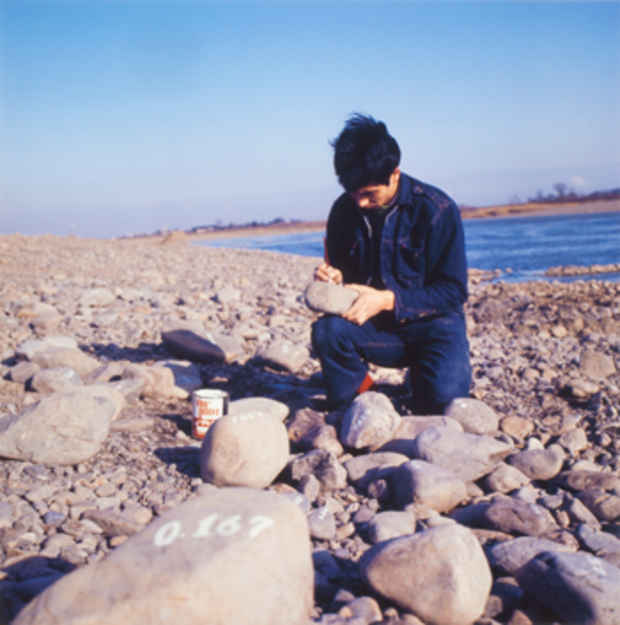Jiro Takamatsu Exhibition
Fergus McCaffrey

This event has ended.
McCaffrey Fine Art presents its second solo exhibition of the work of the late Jiro Takamatsu (1936–1998). Featuring sculpture, painting, and drawing, this exhibition provides an opportunity to view Takamatsu's unprecedented and diverse achievements.
Perhaps the most influential artist working in Japan during the 1960s and 1970s, Jiro Takamatsu altered the evolution of visual art in Japan as an artist, theorist, and teacher. As a cofounder of the legendary collective Hi Red Center in 1963, as the painter of shadows, and as a primary inspiration for Mono-Ha, Takamatsu dominated Japanese artistic discourse during those years. Though he is hardly known in the West, Takamatsu's tentative peer group might include On Kawara (b. 1933), Eve Hesse (1936–1970), Richard Serra (b. 1939), James Turrell (b. 1943), and Richard Long (b. 1945).
McCaffrey Fine Art's exhibition will feature paintings, sculptures, and drawings dating from 1965 to 1973. This presentation of Takamatsu's work would be incomprehensible without acknowledging the discourse and aesthetic precedent of Minimalism, as well as Takamatsu's background in the Anti-Art and Neo-Dada movements. A contrarian by nature, he challenged the prevailing orthodoxy of sculptures fabricated from modular forms and paintings purged of representation in pursuit of truth to material.
Takamatsu responded by embracing perspective, torquing universal geometry, and deflating the authority of Minimalist pronouncements. The high modern form of the cube became central to the artist's efforts to affirm absence and illusion in place of presence and anti-illusion. In Perspective Painting (1967), line is reengaged in the age-old pursuit of rendering three-dimensional perceptual depth in two-dimensional form. Cube 6 + 3 (1968) negates the materiality of a blue wooden cube through the addition of red perspective lines that from one viewing point suggest the cube is transparent.
In his work, philosophical and conceptual concerns ran riot through the sanctified realms of structural integrity and material truth in lattice forms and concrete blocks that were distorted and deconstructed. Takamatsu inserted excess materials throughout the rectangular and square shapes of Slack of Net (1968–69) and Slack of Cloth (1969) in order to create sculptures that sagged and yielded to gravity. In Oneness of Concrete (1971), Takamatsu broke a large concrete block into hundreds of parts, preserving the remnants. In so doing, Takamatsu utterly fragmented a symbol of high Minimalism, imbuing it with a new and different authority—that of the history of the ruin.
Takamatsu represented Japan at the 1968 Venice Biennale, winning the Carlo Cardazzo Prize, and exhibited at the 1969 Biennale de Paris. Between 1968 and 1972, he taught at Tama Art University, Tokyo, and was a key figure in the development of the Mono-Ha movement. Takamatsu's work has been the subject of numerous retrospectives, including ones at the National Museum of Modern Art, Osaka (1999); the Chiba City Museum of Art, Chiba (2000); the Fuchu Art Museum, Tokyo (2004); and Kitakyushu Municipal Museum of Art, Fukuoka (2004).
Media
Schedule
from May 06, 2011 to July 01, 2011